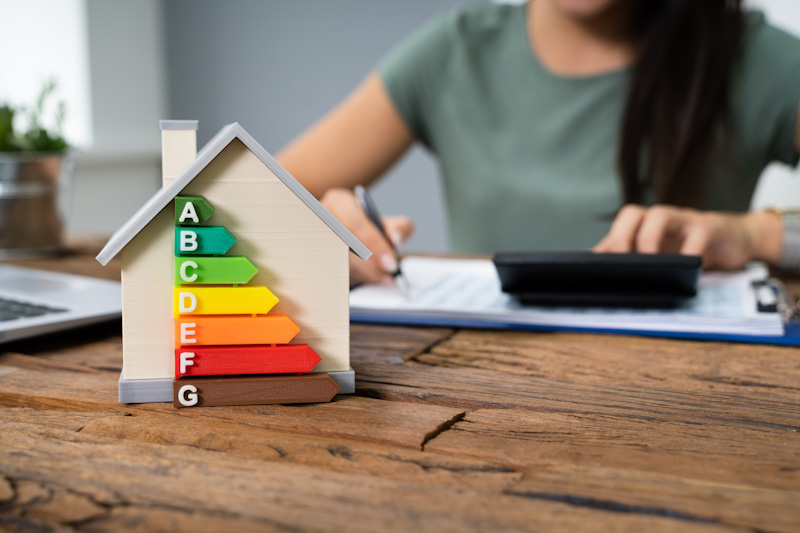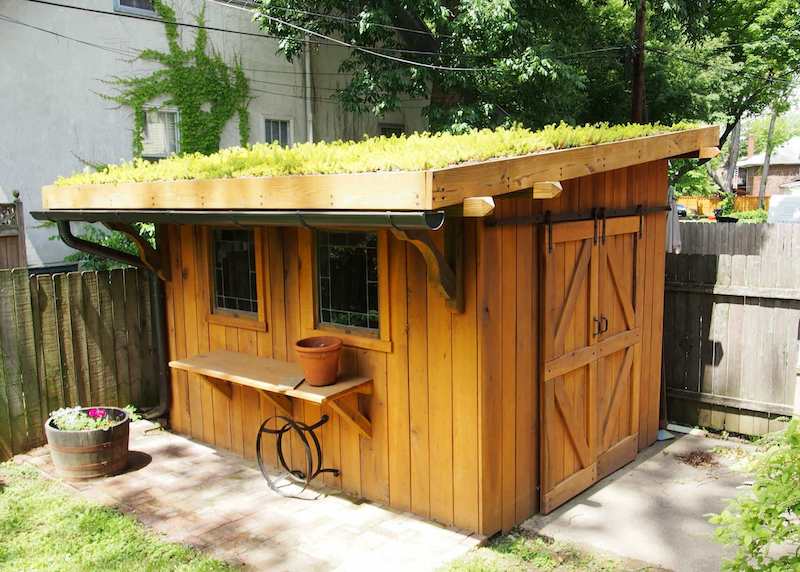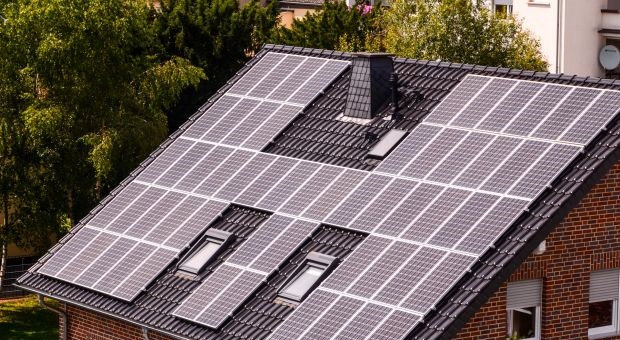Efficiency is a key to any good survival strategy. Running an energy-efficient household minimizes the amount of fuel you’ll burn and can maximize your ability to survive should the power grid fail.
Elevating your energy efficiency can save money, too. Insulating your home and switching to renewables can help you control your bill without compromising your ability to live in comfort.
A well-insulated, energy-efficient house can help you navigate an emergency effectively should things go awry, too. Even simple changes, like landscaping your yard, can improve fire safety and minimize the harm caused by heat waves.
Energy Secure Homes
Everyone wants to bring down their utility bill and maximize their energy efficiency. Energy-efficient homes are better for the environment and can save you heaps of cash. This is particularly important if you’re trying to build an emergency fund but currently spend all your income on bills.
You can make your home more energy-secure by bringing in an energy auditor. Energy auditors will assess every element of your current setup and will find any leaks, cracks, or faulty insulation. Based on their recommendation, you can start working on projects like:
- Re-siding Your Home: Home exteriors protect your house from rising temperatures. However, outdated siding is ineffective compared to more modern materials. Updating your siding can drastically improve your energy efficiency and bring down your bills.
- Landscaping: Strategic landscaping will reduce the amount of sunlight coming into your home and keep your house cool. Sturdy trees can also act as a windbreak which reduces windchill and keeps you warm in the winter months.
- Insulation: Updating your insulation is essential if you want to keep your energy bills down. Areas like the attic, walls, and floors should be insulated appropriately to keep your home comfortable year-round. Be sure to double-check existing insulation, too, as deteriorated insulation can lead to air leakage.
- Roofs: It can be difficult to assess the condition of your roof from street level. Bring in an inspector who can help you ascertain whether or not your roof needs an upgrade. If money is tight, consider upgrading your attic insulation first while you save for new roof tiles.
Once you’ve covered the big-ticket items, consider upgrading your doors and windows. Windows can bring natural light in the winter, but can seriously comprise your A/C efficiency in the spring and summer months. The U.S. Department of Energy reports that up to 30 percent of the energy you use is due to heat being gained or lost through your windows. Have the auditor double-check your seals and consider upgrading any old windows.
Remember to check your weatherstripping in the spring before the hot summer months roll around. Weatherstripping on doors can easily become worn due to foot traffic and high use. If you want to maximize your efficiency, consider switching out old wooden frames for more efficient fiberglass alternatives.
Gas Consumption
Gas prices have gone through the roof in the past decade. Filling up your car is eye-watering enough, so you can’t afford to overspend on gas at home. Properly insulating your home is an important first step toward lower gas usage, but you should still make a few strategic changes around the house.
Start by installing a smart thermometer in your home. These devices are perfect if you want to keep your home warm during the day but are happy to let the temperature drop at night. You can even adjust while you’re away from home, which could save you plenty of cash should you wish to turn the gas off during an emergency.
If you have gas central heating, keep your usage low by regularly maintaining your boiler. Do not fiddle with your boiler alone unless you’re a registered engineer, as boilers utilize high pressure to pump heat around your house. Instead, bring in a registered engineer to complete the maintenance for you.
If you live in an older home and still have radiators, remember to bleed them once a year. Bleeding your radiators is easy and reduces the risk of cold spots. You’ll know that your radiators need bleeding if they take too long to get up to temperature or are cold at the bottom. Never try to bleed your radiator while it’s still hot and remember to check your boiler pressure after bleeding the radiators.
Electrical Efficiency
Most household items and HVAC systems are powered by electricity. However, most people do not have the means to produce their own electricity at home. As a survivalist, a lack of electrical self-sufficiency can undermine your preparedness and leave you in the lurch when things take a turn for the worst.
Start producing your own electricity on a small scale by installing solar panel strips. Solar panel strips can reduce your electricity consumption by charging devices like your phone, tablet, or computer. This passively conserves energy usage even when you are still using your devices.
If you have a plot of land, you may want to consider installing a small wind electrical system. Your ability to generate electricity via win is limited by local weather patterns and government regulations. The US Department of Energy recommends bringing in a professional installer who can recommend a turbine somewhere between 400 watts to 20 kilowatts.
If you do want to go off-grid, make sure to diversify your energy sources. Multiple sources of energy can prove life-saving in an emergency situation, as you can’t always count on wind or solar entirely. Keep a backup battery filled with two days worth of electricity, too, as a safety net should something go wrong.
If you’re currently running an AC unit all day long, you may want to invest in an attic fan. Attic fans push cooler air around your home and ventilate your space. This is particularly nice if you’re an early riser and like to get your survivalist prep work done before the temperatures rise. You’ll have to set aside some funds to get the attic fan installed but it will pay for itself in years to come.
Utilizing Your Land
If you want to live a self-sufficient lifestyle, you have to make maximum use of your land. Making the most of your land can reduce your energy use, feed your family, and keep you safe during a disaster.
If you have a limited plot, start small by looking out for wild fruits in your area. Foraging wild fruits like blackberries and raspberries can increase your food independence and improve your well-being. In the northern states, you may even find wild cranberries which can be used to add flavor to your harvest. If you happen to live in a southern state, look for mayhaw berries as these are great in jellies and syrups.
You can learn to live off the land by gaining experience as a hunter and a gatherer. Do not try to figure it out on your own but enlist the skills of a trained expert before you head out into the backcountry. A trained, professional hunting mentor can help you assess animal behavior and will teach you how to make the most of every animal you kill.
If you want to feed your whole family using your land, you’ll need to invest in an irrigation system that works. Gardening in hot climates requires a massive amount of water and you simply cannot rely on rainfall alone. Get a drip irrigation system up and running in your home ASAP and install a plastic barrier under your soil. This will keep the weeds away and reduce moisture loss on your plot of land.
If you have the benefit of a large lot, you’ll need to divide your land to maximize your yield. Smart farming on large lots can dramatically improve your quality of life in a disaster and will ensure that everyone eats a varied diet. When dividing your land consider features like:
- Orchards: A single-acre lot can house 100 fruit trees that, if well cared for, will yield fruit in five years. Consider planting a range of fruit trees, as this will keep your crop coming through the spring and summer months.
- Feed: Nothing beats free feed for livestock. Focus on growing simple crops like corn and bring in some professional help when erecting corncribs as this is a major project that will require expert attention. If you don’t have the space for a cornfield, consider growing nutrient-dense crops like beetroot instead.
- Ponds: A natural water reserve can improve local biodiversity and will naturally cool your yard. Stock it with fish for a never-ending supply of fresh food once the population is established.
- Livestock: Small livestock, like pigs and chickens, make for great food but are labor intensive. If you do decide to raise your own livestock, consider going full-hog by bringing in some miniature cattle too.
Start slow when cultivating your lot. It’s all too easy to expand quickly and lose control of your lot of land. Focus on doing one thing right and build your land’s yield year-on-year. This steady approach to self-sufficiency will give you time to build your skillset over time.
Conclusion
Energy efficiency and self-sufficiency are key tenets of the survivalist lifestyle. If you want to last during an emergency, you’ll need a low-energy, high-yield household to support your family’s needs. Start small, and focus on achievable projects like replacing the doors or digging out a pond. As your skills grow, expand your lot of land by installing wind turbines and bringing in livestock.










Mackenzie | September 25, 2023
|
Because the morons voted for Biden!!!!!!!
Ranger Remit | September 27, 2023
|
Truuuuue Dat Chica!!!